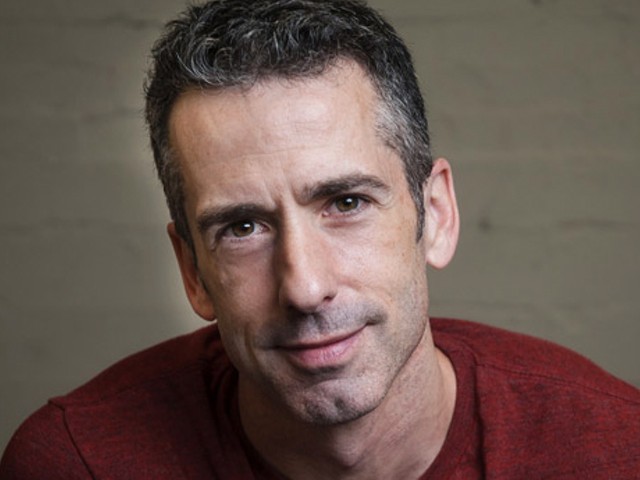In June of 2011, Gov. Rick Snyder stepped behind a microphone at Detroit's Renaissance High School to announce the start of a revolutionary new approach to education in Michigan.
The problem of poor academic performance would be addressed in dramatic fashion.
"We do have too many failing schools in our state," he said. "If you look at us statewide, only 16 percent of our kids are college-ready. That's absolutely unacceptable.
"We need to focus on a new way of doing things."
The target would be Michigan's lowest-performing schools. The bottom 5 percent.
The stakes could not have been higher. As the governor explained it, the future of both the city and the state as a whole would be riding on this experiment in education.
"For Detroit to be successful, it depends on having successful schools. For Michigan to be successful, it depends on having a successful Detroit," Snyder declared. "So we're all in this together, and we're going to make this happen as a team."
A little more than a year after that speech, the Education Achievement Authority (EAA) opened its doors to students. Instead of taking on the challenge of lifting up all of the state's low-performing schools, or even a large number of them in different areas, decision-makers — operating in a way that was anything but transparent — decided to have as this experiment's proving ground 15 Detroit schools. Three of those would be independent charters. The other 12 would serve as the focal point for the EAA's attempt to radically reconstruct the way in which students are educated.
In all, about 10,000 students — largely poor, predominantly African American, often lagging years behind in terms of academics — would be the test subjects.
In more ways than one.
The system itself would be unique, with all strings leading back to the governor.
The legal loophole through which the EAA slipped into being is a little-used state law that allows two units of government, acting in cooperation, to create a third public entity. It this case, it was Detroit Public Schools (DPS) — under the control of a Snyder-appointed emergency manager — and the Eastern Michigan University Board of Regents, the majority of whom are gubernatorial appointees, that entered into what's called an inter-local agreement that created the EAA.
It is overseen by an 11-person board, with the governor appointing seven members and EMU and the DPS's emergency manager each selecting two more.
And so this became the test of a completely new system of schooling.
It turned out to be another kind of test as well.
A test of software, developed by one for-profit corporation and marketed by another.
A product named Buzz.
Landing in Detroit
It came to Detroit from Kansas City, along with John Covington, the controversial figure hired by the EAA board to be the new system's first chancellor. Along with Buzz, Covington also brought to Detroit a group of administrators who worked under him in Kansas City. A key member of that team is Mary Esselman, first hired on as the EAA's Chief Officer, Accountability, Equity, and Innovation for the EAA, and later promoted to the position of deputy chancellor.
Covington is gone now, having departed under a cloud of scandal generated by news reports of the credit card spending that occurred under his watch.
But the software remains, significantly upgraded twice since it arrived. Those upgrades were made possible because of the students and teachers at the EAA, who were bitten again and again and again by the many bugs that plagued Buzz for the first two years of its use in Detroit.
Created by a Utah-based company called Agilix Labs, Buzz is education software that provides what its marketing material describes as an individualized learning experience. With the help of $100,000 from the EAA, Buzz was merged with other educational software created by the School Improvement Network [SINET], also based in Utah. Another $250,000 from the EAA would eventually pay for improvements suggested by the teachers, students, and administrators who were using it, according to Esselman.
In December 2013, Gov. Snyder had a number of questions about all of this, including how these products, in conjunction with the EAA model, might be taken statewide.
"The Buzz student-centered learning platform is a joint project between EAA, School Improvement Network and Agilix," according to a written response crafted by Esselman and company representatives.
How do we know that?
The information is found in internal EAA documents obtained through a Freedom of Information Act request filed by Thomas Pedroni and shared with the ACLU of Michigan. Pedroni is an associate professor of curriculum studies at Wayne State University. He's also the director of the Detroit Data and Democracy Project, which he founded in 2011 to "provide timely policy briefs, public testimony, and authoritative perspective on education issues for regional education reporters, community leaders, and community-based organizations."
For those who have followed the EAA saga at all, it's no secret that Pedroni, an expert on urban education, is a critic of the EAA's methods.
The documents he obtained, however, speak for themselves. There are thousands of them — including the email from Snyder, which asks about Agilix, the School Improvement Network, their relationship with the EAA, and how the whole model might be expanded beyond Detroit.
The dual-crafting of the response to Snyder's query, involving a back-and-forth between Esselman and company employees with edits taking place at each stop, reflects the close working relationship between the three entities.
Sometimes it's difficult to tell where the interests of one stops and the other begins.
For example, the response to Snyder points out that Esselman is working with SINET on something called a LumiBook that will describe her vision of the "student-centered" learning process. (A LumiBook, according to the School Improvement Network website, is "the next step in the evolution of the ebook — an online reading platform that lets you become part of the book — developing ideas along with fellow readers and the author that just might become the book's newest chapters.")
In terms of Buzz and the School Improvement Network platform it's been wedded with, the software has "been developed to be agnostic to instructional delivery and resource source, which means it can be used for virtual schools, blended instruction, distance learning, traditional instruction with differentiation, and online assessment," the governor was told.
A product at the forefront of education in the Internet age — at least as it was portrayed to Michigan's self-described "nerd" governor.
But in reality, what internal EAA documents reveal is the extent to which teachers and students were, over the course of two school years, used as whetstones to hone a badly flawed product being pitched as cutting-edge technology.
In fact, a SINET employee in November of 2013 informed Mary Esselman of his "fear" that another school district might want to start using Buzz (re-branded as GAGE for the purpose of marketing the product to others) before a second major upgrade could be finished and ready for use in March of the following year.
Records show that such an upgrade did finally land in April of 2014, and was installed over spring break. Another two months passed before a press release was issued announcing that the upgraded product would be available to selected school districts for the start of the 2014-2015 school year.
Agilix and the School Improvement Network began working with Covington and his team in Kansas City.
"In Kansas City, the leadership team implemented the model with limited technology...," according to the response provided to Snyder. "In Michigan, they have had the opportunity to select staff and leverage a strong teaching and learning platform with strong, short-cycle innovation."
By short-cycle innovation they mean this: improvements were made as Buzz moved from Kansas City (where it is no longer used) to Detroit. And in the two years since its arrival here, it has gone through technological upgrades significant enough to warrant press releases heralding the breakthroughs that were achieved.
"We're building this plane as we fly it," is a phrase numerous sources we've interviewed have attributed to Mary Esselman, who was in the thick of the technological planning.
Part of that build-it-as-they-go model included paying inexperienced Teach for America instructors to provide curriculum content that was loaded into Buzz when it arrived at the EAA. They were recent college grads who didn't study to become teachers and who lacked certification, coming to the EAA with only a few weeks of training in the art of teaching. (About 25 percent of the EAA's teachers were from TFA when its schools opened in 2012.)
"We selected eight teachers, some newer teachers and some more experienced, to provide additional choice options for students on a stipend basis," said Esselman, who provided a written response to questions from the ACLU. "Four were TFA teachers."
That's anything but usual.
"Typically in schools, curriculum is developed via teams of teachers working under the guidance of a curriculum specialist (someone with many years of teaching experience and a master's degree but we are now consistently seeing people with doctoral or education specialist degrees in these positions)," according to Stephen A. Wellinski, an associate professor of teacher education at Eastern Michigan University. "Usually these teams are built around the more experienced teachers. It is problematic when novice or non-teachers are in charge of creating school-based curriculum and course content."





